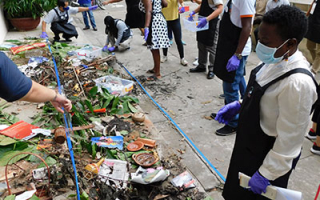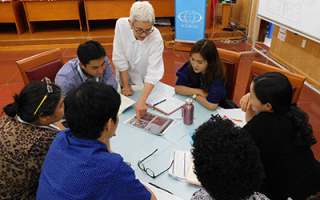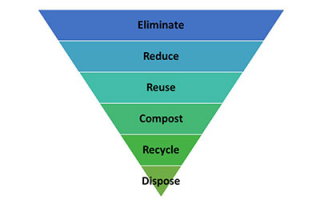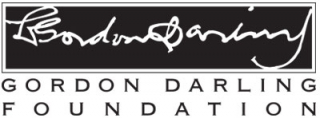This year marks 500 years since the death of Leonardo da Vinci (1452 – 1519), who in response to observing the natural world is believed to have written, “there is no such thing as waste.” The by-product of one industry should become the starting point for another. His words are eerily pertinent for framing an understanding of sustainable consumption and production in the modern world.
In September 2015, the United Nations General Assembly adopted the 2030 Agenda for Sustainable Development, with 17 aspiring and universal goals to address the mounting challenges and uncertainties in our world. Through its mission to provide Member States with the skills, knowledge, tools and enabling environments to preserve cultural heritage in all forms for the benefit of all people, ICCROM is committed to working towards the achievement of the United Nations Sustainable Development Goals (SDGs).
With this background, it is both timely and meaningful for the cultural heritage profession to direct attention to UN Sustainable Development Goal 12: Responsible Consumption and Production. This SDG is about promoting resource and energy efficiency, or more simply, doing more and better with less. At a time when the material consumption of resources is increasing, while countries face the challenges of air, water and soil pollution and experience the real impacts of climate change, this SDG asks us to consider how we can minimize our environmental impact by reducing waste and making carefully informed, sustainable choices.
Sustainable practices in cultural heritage preservation
First defined at the Oslo Symposium in 1994, sustainable consumption and production is about:
"the use of services and related products, which respond to basic needs and bring a better quality of life while minimizing the use of natural resources and toxic materials as well as the emissions of waste and pollutants over the life cycle of the service or product so as not to jeopardize the needs of further generations”.
This issue has become an increasingly important concern for cultural heritage professionals. While we are chiefly concerned with making the environment safer for cultural heritage, we also need to act to improve and care for the wider environment that created it. In this respect it is worth questioning whether short-term initiatives to preserve cultural heritage may actually effect its future deterioration through the impact of climate change. Furthermore, as cultural heritage professionals we generally possess detailed knowledge of the cultural heritage we preserve; however, this attention should also be extended to the materials and processes used to enact that care. Our present-day efforts to extend the lifespan of cultural heritage may well be for naught if the survival of future generations and their cultural heritage is under threat from environmental disasters.
Cultural heritage preservation should then be viewed through the lens of environmental sustainability – understood as when the consumption of energy, resources and the production of waste is reduced and attitudes are geared towards prolonging the usable life of materials. It is perhaps most useful when applied as a process, and not merely an end goal. It is about creative thinking and making personal choices, informed decisions and meaningful changes to behaviour, however small or large.
Cultural heritage organizations are often highly visible and respected within their communities, and therefore uniquely placed to take a leading role in sustainable consumption and production. Sustainability initiatives have already taken many forms in recent years, one notable measure being the relaxing of environmental guidelines for collections. Institutions are actively exploring other energy saving measures to reduce their carbon footprint, such as environmentally sustainable building design, renewable energy sources, passive climate control and LED-lighting technology. For conservators, the professional codes of ethics that guide their practice dictate that materials or techniques which harm cultural heritage, the environment or people should not be used. Investigations are underway into ‘green’ chemistry solutions, and conservators are reconsidering their use of resources and the management of waste generated by treatments.
Taking action: going “Zero Waste”
Another viable initiative is to introduce the concept of sustainable consumption and production into cultural heritage events, like training courses, workshops or conferences. “Zero Waste” describes the diversion of all non-hazardous waste from landfill or incineration through initiatives to eliminate, reduce, recycle, compost or repurpose waste materials. It involves considering the entire life cycle of a material, from “cradle to grave” – the resources that went into production, how it was made, how it is used, how it will be disposed of and the wider impact of that disposal.
Small-scale events like a training course offer a useful starting point for sharing “Zero Waste” initiatives with colleagues. It is also a valuable way to test how “Zero Waste” might work on a larger scale within an institution. A “Zero Waste” event aims to eliminate or reduce any waste generated by the event and redirect as much waste as possible to recycling, compost or reuse in order to minimize the amount of waste sent to landfill.
To deliver a “Zero Waste” event requires good communication, collaboration and commitment from everyone involved, including leadership, organizers, partners, suppliers, contractors, and participants. Taking action to divert as much waste as possible from landfill relies on an understanding of how much waste is being generated in the first place. Often this starts with an audit or means of measuring the waste produced. Where material consumption cannot be eliminated, it requires careful planning to reduce the amount of materials consumed, alongside creative thinking to select materials that can be reused or recycled.
A “Zero Waste” initiative will be rolled out at the next ICCROM courses in 2019 – Communication and Teaching Skills in Conservation Science in Arita, Japan; and Planning new exhibitions: conservation, communication, community in Vientiane, Laos. Course organizers and participants will be encouraged to make conscious choices and think of effective ways they can modify their behaviour to limit the amount of waste generated during the course.
The benefits of “Zero Waste” are economic, by saving on operating costs and supporting local industries; environmental, by reducing resource use and pollution; and social, by enhancing reputation and educating participants.
ICCROM is excited to share the “Zero Waste” initiative with all 2019 course participants! We hope this action will be a starting point to spark new ideas and discover shared solutions for sustainable consumption and production in cultural heritage preservation endeavours.
Emily Keppel
Master of Cultural Materials Conservation
ICCROM Intern, Collections Unit
This internship has been generously supported by a Darling Travel Grant from the Gordon Darling Foundation.




